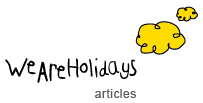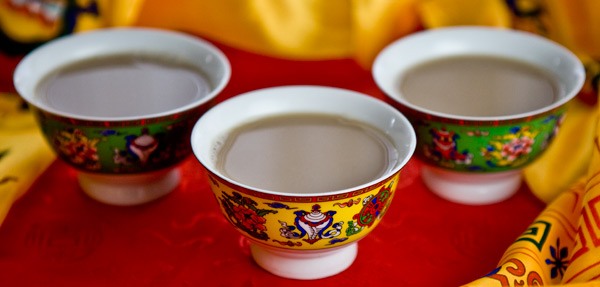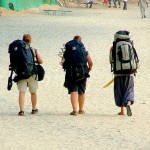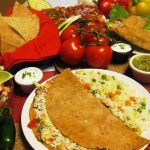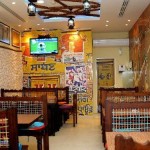Home to the world’s most ancient, undisturbed Buddhist populations, the natives of Ladakh are a tribe indigenous to the mighty mountains that surround them. They have been untouched by the cultural influences that have ravaged the rest of the subcontinent by the sheer might of geography; the Mughals and the British Raj, although the current digital revolution might not spare them. Ladakh tourism has only picked up in recent times, being shut off for tourists half the year. One of the most popular things to do in Ladakh is trekking.
Ladakhi cuisine is heavily influenced by the high altitudes and freezing weather. Their food is laden with fat that is essential to keep the body warm. Try eating the same way anywhere else and your cholesterol will shoot through the roof in no time. Butter tea can, at best, be described as an acquired taste.
Butter Tea: Origins
It obviously originated somewhere along the freezing Himalayan mountains; most likely Tibet. The oldest evidence has been found in Tibet from before the 10th century, so yeah, we’ll go with Tibet as the official place from where butter tea originated.
The Defining factor
Besides the fact that it has butter (churned from yak’s milk, no less), butter tea is salty. You read that right, it’s made with salt as opposed to sugar; therefore the acquired taste bit.
How to brew Butter Tea
Now let’s start with the original and we’ll get to the substitutes later on.
You start off like normal tea, boil tea leaves in water, but that’s where the similarity ends. It’s a special black tea that comes from an area called Pemagul in Tibet (the Tibetan connection once again). Ideally, they should boil in water for half a day till a dark, almost black, brown colour is achieved. Add some milk. The liquid is then filtered and poured into a cylinder with fresh yak butter and salt (no one really cares what kind of salt is used) and churned. The longer the better! Yak butter and milk are thicker and creamier than cow’s milk and also more pungent, in this aspect closer to goat’s cheese.
The result is a purplish liquid that is about the thickness of a stew or thick oil. It is then poured into clay tea-pots, and served in Japanese style teacups.
If you want to make it at home and you have never seen a yak in your life, that’s alright. Use regular tea leaves, full cream milk and normal butter (salted or unsalted). No one still cares about the kind of salt. And if you can’t find a traditional churner, use the blender instead
Statutory Warning: Most non-Tibetans find it’s closer in consistency to soup rather than tea.
The Drinking Tradition
Tibetan custom calls for butter tea to be drunk in separate sips, and after each sip the host refills the bowl to the brim. Thus, the bowl is never empty; it is constantly topped off. If one does not wish to drink, the best thing to do is leave the tea untouched until the time comes to leave and then drain the bowl. The host will not be offended this way.
Po Cha is best enjoyed with Tsampa and works as a good remedy for chapped lips.
The best time to visit Ladakh is in the summe, between June and September.
Latest posts by Shivangi Rajendran (see all)
- Top 6 Places to See in Pondicherry - October 29, 2021
- Top 6 Places to See in Coorg - October 25, 2021
- Top 10 Activities to do in Pondicherry - October 24, 2021
